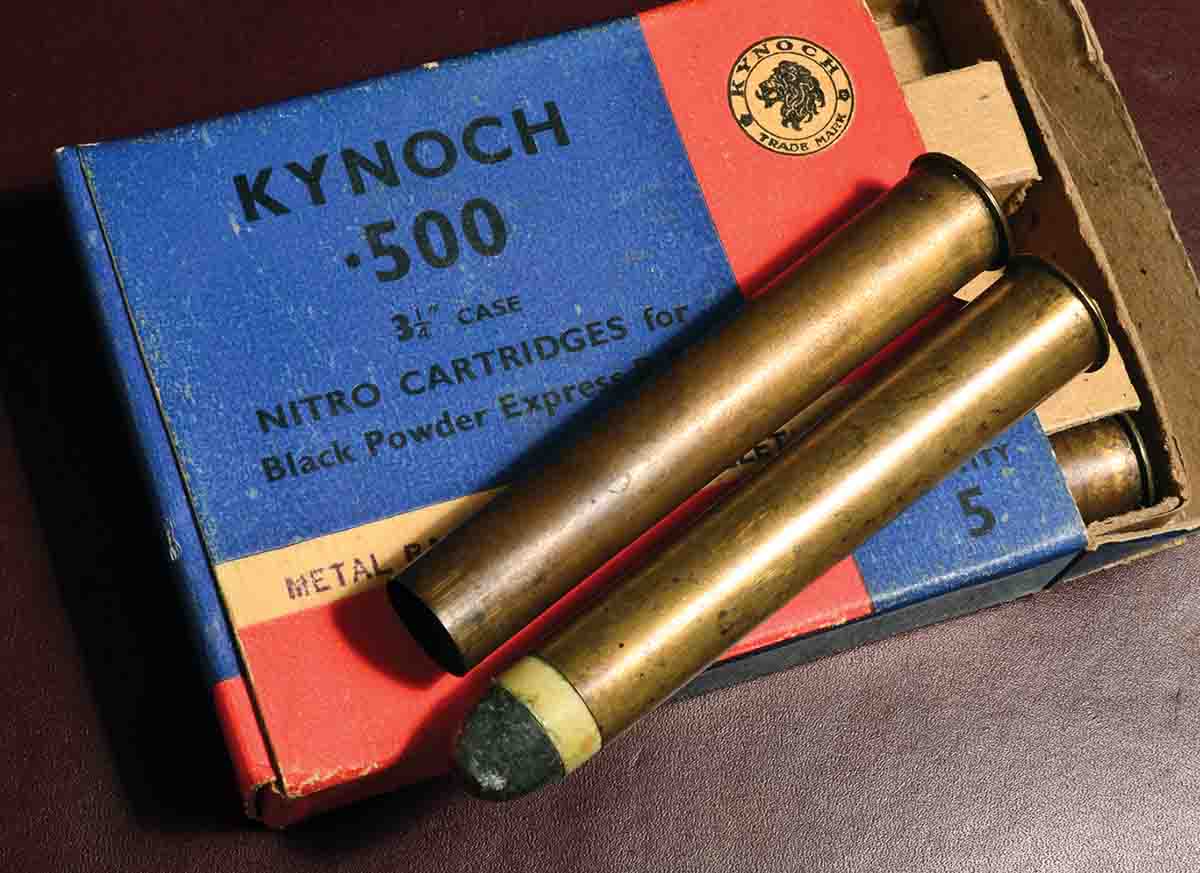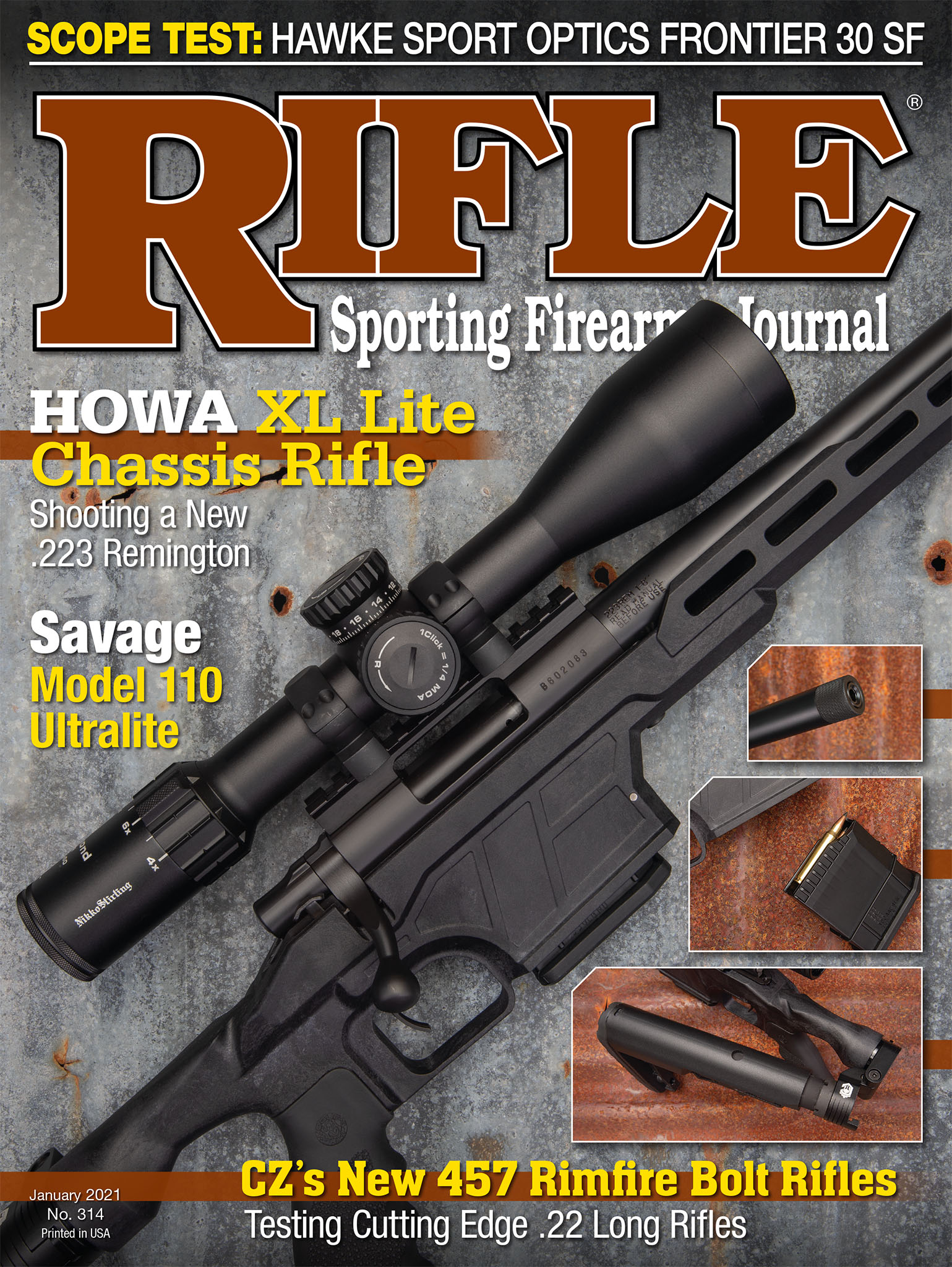Walnut Hill
Black, White and Shades of Gray
column By: Terry Wieland | January, 21

This last was the couple of decades in which target shooters, especially, experimented with, and often triumphed, using “duplex” loads combining black and smokeless or “white” powder. In fact, early smokeless powders came in a range of colors, including gray, beige, orange and pink, as well as whitish, but since none of them were black, they were lumped together as “white.”
The first smokeless powder was invented by Captain Edward Schultze of the Prussian Artillery in 1856 – 40 years before it came into general use. This was followed by independent developments by experimenters in several countries, most of them driven by a desire to come up with a powder suitable for military use. Ballistic considerations aside, even the earliest smokeless powders had two great advantages over black: They did not enshroud a battlefield in clouds of smoke, and greatly reduced the need for cleaning.
Capt. Schultze’s earliest powder was too fast-burning for rifles, so most subsequent development was concentrated on powder for an infantry rifle. It was not until 1886 that Paul Vielle of France perfected a smokeless rifle powder – Poudre Blanche, or ‘white powder’ – which then made possible the Lebel military rifle. In England, Sir Frederick Abel and Sir James Dewar developed Cordite in the late 1880s. This allowed the army to switch its new (1887) .303 cartridge from black powder to smokeless in 1892.
Suddenly, every cartridge rifle made up until that time was obsolete. Or was it? Riflemakers were not anxious to abandon proven designs, nor were owners of fine Rigbys or Holland & Hollands (in England) or Winchesters and Sharps (in America) ready to trade them for something new. Ammunition makers continued to make the necessary cartridges to allow them to keep shooting, at the same time as the riflemakers themselves began to develop new cartridges and rifles strong enough to handle them.
Probably the most famous of these new cartridges was the .450 Nitro Express (3¼ inch), presented to the world in 1898 by John Rigby & Co. Rigby simply took the old .450 Express 3¼ inch, packed it with Cordite, added “Nitro” to the name (to denote the nitric nature of smokeless powder) and designed a much stronger rifle to handle the vastly increased pressure.
This increased pressure was accompanied by heavier bullets at higher velocities, and the bullets themselves were given copper or cupro-nickel jackets to prevent lead fouling. This gave greater penetration, and suddenly the .450 was a bona fide elephant cartridge, where its black-powder predecessor had been a fine rifle for stag stalking and that was about it.
All of this presented some serious problems not just to rifle and ammunition makers, but to the proof houses of Europe. The proof masters frantically developed methods of “nitro” proofing the new rifles, so shooters would know what was safe and what was not. Still, there were hordes of shooters who owned older black-powder rifles that wanted to enjoy some of the advantages of smokeless powder without the expense of a new rifle.
Some of the more daring souls, especially in the U.S., tried using a pinch of smokeless powder as a “priming” load, then filling up the case with black powder. They found that this method had various effects, most of them good. Mainly, they seriously reduced black-powder fouling, which was a benefit for those shooters engaged in lengthy matches where it was necessary to swab the bore every shot or two, or watch their accuracy go down the drain.
Some claimed improved accuracy or increased velocity, although the latter was rarely a goal for target shooters. They didn’t want any more recoil, and increasing velocity only increased the lead fouling, which was as detrimental to accuracy as powder fouling. The improved accuracy with duplex loads was a result of more consistent powder burning.
As far as I can discover, the use of duplex loads remained the province of individual shooters, and duplex ammunition was never offered by ammunition companies. Such experimentation was easier in America, where there was no government proof house to urge caution, issue warnings and generally spoil the fun. But there is no general folklore about such goings-on resulting in burst barrels, mangled hands and lost eyesight, probably because the men who did this were pretty responsible. Few would risk a prized, highly accurate Ballard or Sharps rifle, especially since higher velocity was not the goal anyway.
Some of the combinations these gentlemen came up with were pretty wild, just the same. One wrote that he had developed two equally accurate and efficient loads for the .28-30-120 cartridge: The first used a few grains of DuPont Bulk Shotgun and filled up with black; the second reversed this, and used a few grains of black as a priming load and filled up with Bulk Shotgun. Since DuPont Bulk Shotgun is no longer with us, there is no way to test this.
DuPont Bulk Shotgun was one of those “in between” early smokeless powders with a burning rate and general characteristics that were neither as benign as black powder, nor as devastating as the more virulent smokeless, and so it could be experimented with without raising pressures to the roof. Another early powder used for this purpose was DuPont #80, replaced in 1941 by SR-4759. (SR stands for Sporting Rifle, just as IMR stands for Improved Military Rifle.) SR-4759 was then around for many years, and was immensely useful for reduced loads in many large rifle cartridges. Its place has been taken, although not terribly well, by IMR’s Trail Boss. Another good powder for duplex black-powder loads is 4227. The Hodgdon version is gone, but the IMR original is still with us, and hopefully will be for a long time. It is “the” powder in many small rifle cartridges such as the .32-20.
The English approached things differently. First of all, many of the older black-powder rifles were in everyday use in far-flung places like India and Africa. They wanted to make some of the advantages of smokeless powder available to these men, too, but it had to be in the form of factory cartridges. Eley Brothers and Kynoch, the two main ammunition companies, were constrained by the proof house, since ammunition is also subjected to proof tests, just as guns are, and had to meet pressure limitations.
To get around this, they developed loads that were called “Nitro for Black.” They were, to all appearances, the same as rounds loaded with black powder and usually fired lead bullets, but they came in boxes of a different color than the usual yellow and red (Eley-Kynoch) and often, but not always, had an “N” or “N B” stamped on the head. These were cartridges charged with a low-pressure smokeless powder that duplicated the performance of black powder but without the smoke and fouling.
Contrary to what you might read in various ads for old rifles, and internet descriptions of same, no rifle was ever proofed “Nitro for Black.” It was not a proof designation; it was a cartridge type that could be fired in either rifle.
There were many varieties produced during about a 20-year period around 1898 to 1914. After 1918, when civilian production resumed, many older cartridges were dropped, including, it appears, most of those “Nitro for Black” types. Nitro for black was mostly restricted to the most popular black-powder cartridges, such as the .450 Express 3¼ inch, .500 Express and a couple of the .577s, which were offered in various case lengths.
All of this is mostly of interest to cartridge collectors, since no one is about to stuff a century-plus-old cartridge into a century-plus-old rifle and pull the trigger – at least I hope not. But it shows the level of ingenuity used during the transitional period before 1914.


